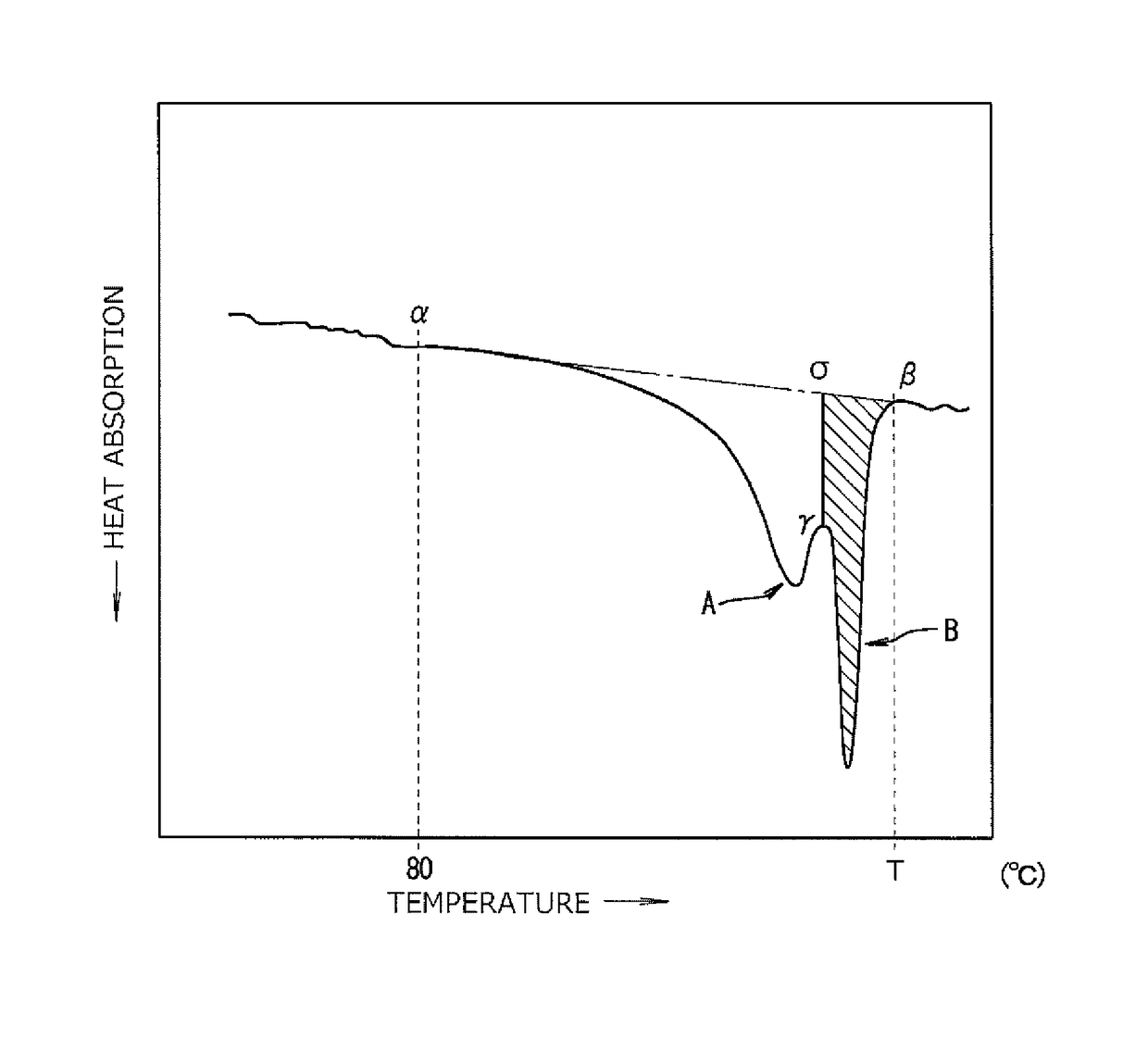Method for producing skin-covered polyolefin resin foamed molded article
a polyolefin and foamed molded technology, applied in the field of skin-covered polyolefin-based resin foamed molded articles, can solve the problems of affecting the difficulty of filling the expanded beads in the interior space of the skin, so as to achieve good filling efficiency, improve the physical properties of the foamed molded article, and high fusion bonding strength
- Summary
- Abstract
- Description
- Claims
- Application Information
AI Technical Summary
Benefits of technology
Problems solved by technology
Method used
Image
Examples
example 1
[0106]A polypropylene-based resin (PP1) (manufactured by Prime Polymer Co., Ltd., trade name: Prime Polypro, grade: E-150GK, melt flow rate (MFR): 0.6 g / 10 min (230° C., load: 2.16 kg), melt tension (MT): 7.0 cN, melting point: 162.5° C.) was heated to 210° C. and kneaded in an extruder having an inside diameter of 65 mm to prepare a melt of the resin (PP1).
[0107]The melt was then filled in an accumulator attached to the extruder and adjusted to 210° C. The melt was then extruded through a die, and the resulting parison in a softened state was placed between mold halves of a dividable flat plate-like mold located immediately below the die and having a length of 730 mm, a width of 420 mm and a thickness of 20 mm. The mold was closed and adjusted to 70° C. Then, pressurized air with a pressure of 0.50 MPa(G) was blown into the parison from a blow gas introducing hole and, at the same time, the space between the outer surface of the parison and the inner surface of the mold was depress...
example 2
[0110]The same procedure as in Example 1 was repeated except that the expanded beads as shown in Table 2 were used and the molding was carried out under the molding conditions shown in Table 2. The physical properties of the obtained foamed molded article are summarized in Table 2. Because the expanded beads used in this example have a higher ratio of heat of fusion than that of the expanded beads of Example 1, the molding was carried out at a higher steam pressure than that used in Example 1.
example 3
[0111]The same procedure as in Example 1 was repeated except that the expanded beads as shown in Table 2 were used and the molding was carried out under the molding conditions shown in Table 2. The physical properties of the obtained foamed molded article are summarized in Table 2. Because the expanded beads used in this example had a lower ratio of heat of fusion than that of the expanded beads of Example 1, secondary expansion tended to occur more easily, the steam flow became less smooth and the molding cycle time became longer as compared with Example 1.
PUM
| Property | Measurement | Unit |
|---|---|---|
| weight | aaaaa | aaaaa |
| diameter | aaaaa | aaaaa |
| bending elastic modulus | aaaaa | aaaaa |
Abstract
Description
Claims
Application Information
 Login to view more
Login to view more - R&D Engineer
- R&D Manager
- IP Professional
- Industry Leading Data Capabilities
- Powerful AI technology
- Patent DNA Extraction
Browse by: Latest US Patents, China's latest patents, Technical Efficacy Thesaurus, Application Domain, Technology Topic.
© 2024 PatSnap. All rights reserved.Legal|Privacy policy|Modern Slavery Act Transparency Statement|Sitemap

